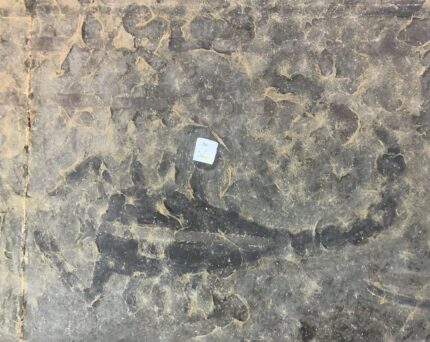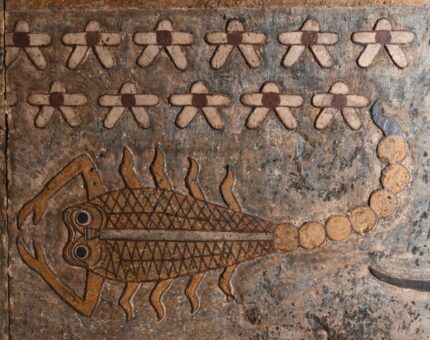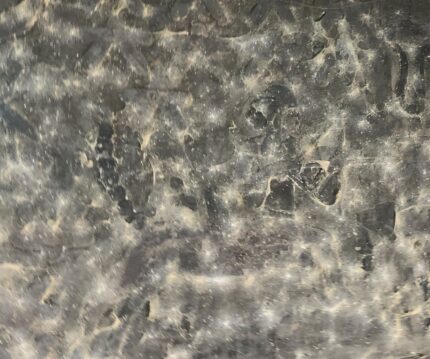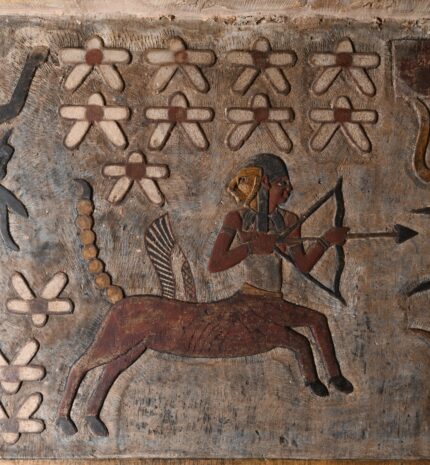Archaeologists have uncovered a rare representation of the zodiac on the ceiling of the Temple of Esna near Luxor, Upper Egypt. It is one of only three complete zodiac groups found in Egypt. The ceiling paintings depict the 12 signs of the zodiac from Aries to Pisces, imports from Hellenistic astrology interpreted through Egyptian religious iconography.
The overall project is in the hands of Hisham El-Leithy of the Egyptian Ministry of Tourism and Antiquities and Professor Christian Leitz of the University of Tübingen.
“Representations of the zodiac are very rare in Egyptian temples,” Leitz says, adding “The zodiac itself is part of Babylonian astronomy and does not appear in Egypt until Ptolemaic times.” Researchers think 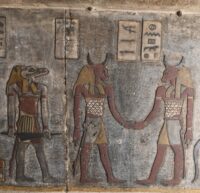
the system of zodiac signs and their related constellations was introduced to Egypt by the Greeks and subsequently became popular. “The zodiac was used to decorate private tombs and sarcophagi and was of great importance in astrological texts, such as horoscopes found inscribed on pottery sherds,” says Dr. Daniel von Recklinghausen, a Tübingen researcher. “However, it is rare in temple decoration: Apart from Esna, there are only two completely preserved versions left, both from Dendera,” he says.
In addition to the zodiac and the star constellations, the restoration revealed colorful images of snakes, crocodiles and various fabulous beasts, including a snake with a ram’s head and a bird with a crocodile’s head, the tail of a snake and four wings.
The Temple of Esna was dedicated to Khnum, the god of the source of the Nile who made human children out of the river’s clay on a pottery wheel and then planted them in the uterus of the mother. Construction began in 186 B.C., but today only the pronaos (vestibule), built in the reign of the Emperor Claudius (41-54 A.D.), survives. It is covered in painted inscriptions and reliefs from the column bases to the ceiling. The intricate decoration of the Claudian structure took two centuries to complete, finally during the reign of the Emperor Decius in 250 A.D.
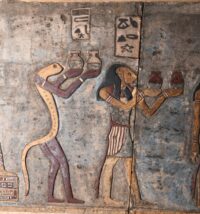
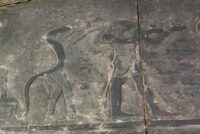
It survived the centuries thanks to its prime location in the middle of the city center and its conversion to different uses. It was handier to keep it as a working structure instead of mining it for building materials. The space was used as a caravanserai (a roadside or urban hostelry where travelers and their animals could find accommodations and nourishment) and in the 19th century as a cotton warehouse. Centuries of torches and cooking fires and candles left thick layers of soot on the interior ceiling of the temple. Between the grey soot and the bird droppings, the ceiling decoration was completely obscured.
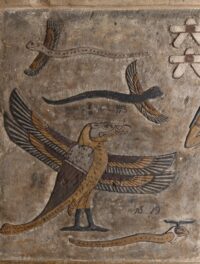
The reliefs on the columns and walls were rediscovered by Egyptologist Serge Sauneron who excavated the temple in the 60s and 70s and published the inscriptions in full. Or, rather, what he thought was in full. The Roman-era hieroglyphic reliefs were roughly chiseled in outline. With no depth to the relief, constellations were painted directly on the ceiling and were all but invisible under the grime.
A comprehensive restoration of the painted surfaces of the temple began in 2018. The team cleaned the walls, removed centuries of layered filth, stabilized the colors, removed salts and revealed the original colors and shapes of the decoration. In the course of the restoration, the team discovered depictions of the planets Jupiter, Saturn and Mars, stars and constellations including the Big Dipper in the shape of a bull’s leg, Orion as Osiris and Sothis as Isis. They also discovered previously unknown constellations, including the Geese of Ra, and constellations like the “seven arrows” which the Egyptians used to measure time.
